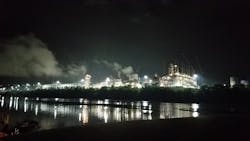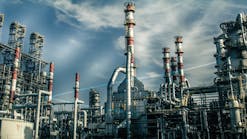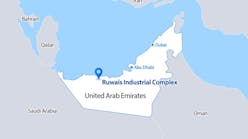Shell commissions Pennsylvania petrochemical complex
Shell PLC subsidiary Shell Chemical Appalachia LLC has officially started operations at its long-planned Shell Polymers Monaca (SPM) petrochemical complex atop a 386-acre site just southwest of Monaca, Pa., along the Ohio River in Potter and Center Townships, Beaver County, 30 miles northwest of Pittsburgh (OGJ, Nov. 1, 2021).
Commencing operation as of Nov. 15, SPM will produce about 1.6 million tonnes/year (tpy) of polyethylene upon ramping up to its full nameplate capacity, which is scheduled to occur by second-half 2023, Shell said in a release.
First proposed as a potential investment project in 2012, Shell began construction on SPM in April 2017 following the operator’s final investment decision (FID) to move forward with the development in June 2016 (OGJ Online, Nov. 8, 2017; Mar. 15, 2012).
Upon announcing official commercial operation, Shell confirmed SPM contracted at FID for most of the complex’s required natural gas feedstock from regional gas operators in nearby Utica and Marcellus basins.
While details regarding SPM’s feedstock supply agreements were not revealed, Shell previously said the Monaca complex will receive the entirety of its regionally-sourced ethane feedstock via Shell Pipeline Co. LP’s Falcon ethane pipeline system (FEPS), a 97-mile common carrier ethane pipeline that—stretching across southwestern Pennsylvania, West Virginia, and eastern Ohio—connects Monaca with three major ethane source points in the rich-gas portions of the Marcellus and Utica shale reservoirs: Houston, Pa.; Scio, Ohio; and Cadiz, Ohio (OGJ Online, Aug. 1, 2022).
SPM overview
Designed to produce ethylene, high-density polyethylene (HDPE), and linear low-density polyethylene (LLDPE) from Marcellus and Utica shale ethane, Shell’s Monaca site houses a dual 1.5-million tpy ethylene and 1.6-million tpy polyethylene complex, which features seven tail gas and natural gas-fired ethane cracking furnaces with a heat input rating of 620 MMbtu each to support the ethane cracker and three polyethylene units.
The complex’s two gas-phase polyethylene manufacturing lines each are equipped to produce 550,000 tpy of either HDPE or LLDPE-grade pellets, while a third manufacturing line outfitted with INEOS AG’s slurry-loop reactor polyethylene technology will produce 500,000 tpy of HDPE pellets. Alongside installations for steam generation, storage, logistics, cooling water, and wastewater treatment, the complex also houses a 250-Mw cogeneration power unit that uses natural gas and steam to meet the site’s full electricity requirement, according to project documents.
Shell said SPM comes as part of its Powering Progress strategy to reduce the production of traditional fuels and accelerate the operator’s transition by 2050 to net-zero emissions. A cornerstone of the strategy includes the operator’s plan to consolidate its global refinery footprint to five core energy and chemicals parks that maximize integration benefits of conventional fuels and chemicals production while also offering new low-carbon fuels and performance chemicals (OGJ Online, Sept. 6, 2022; Jan. 21, 2022).

Robert Brelsford | Downstream Editor
Robert Brelsford joined Oil & Gas Journal in October 2013 as downstream technology editor after 8 years as a crude oil price and news reporter on spot crude transactions at the US Gulf Coast, West Coast, Canadian, and Latin American markets. He holds a BA (2000) in English from Rice University and an MS (2003) in education and social policy from Northwestern University.


